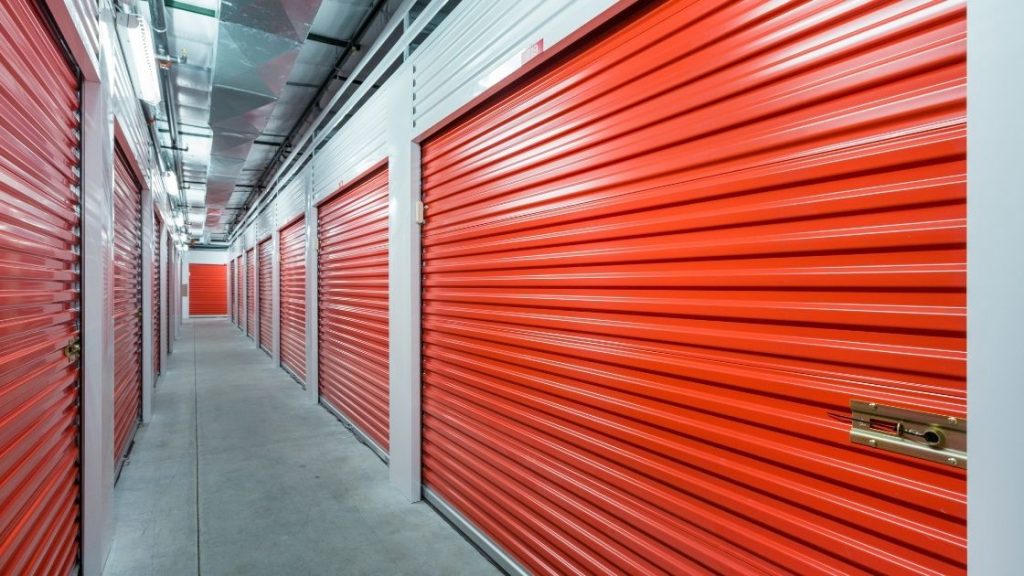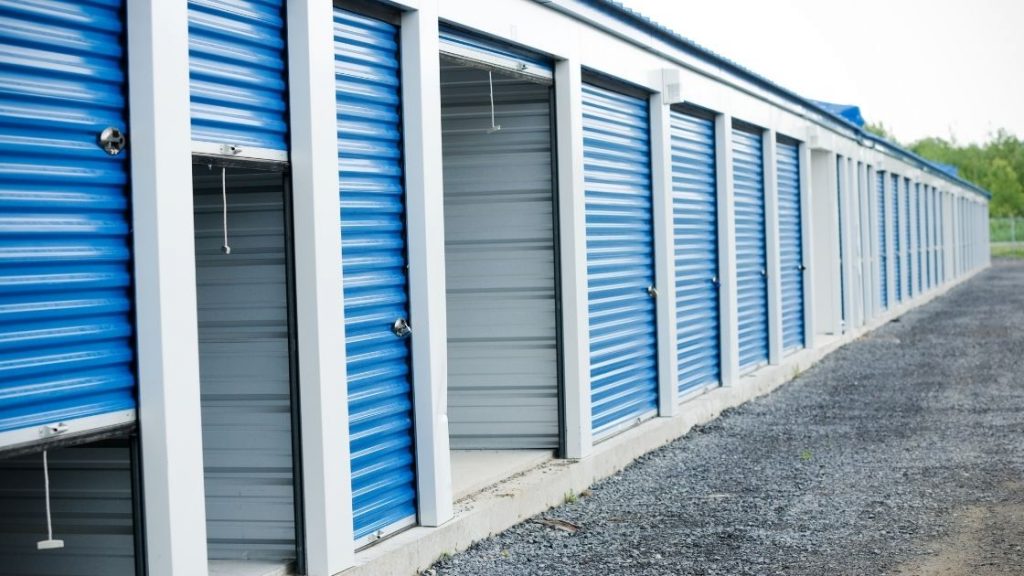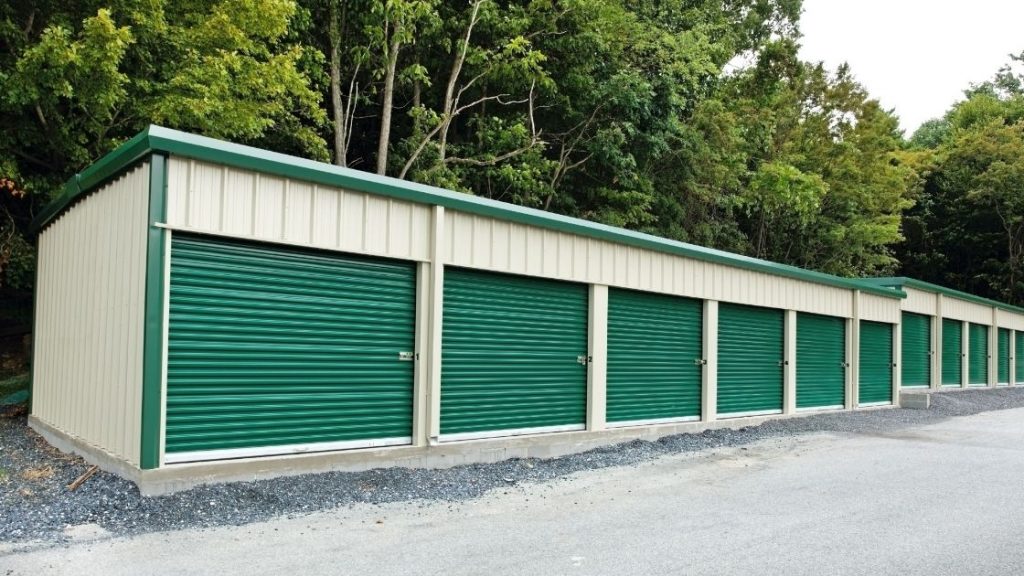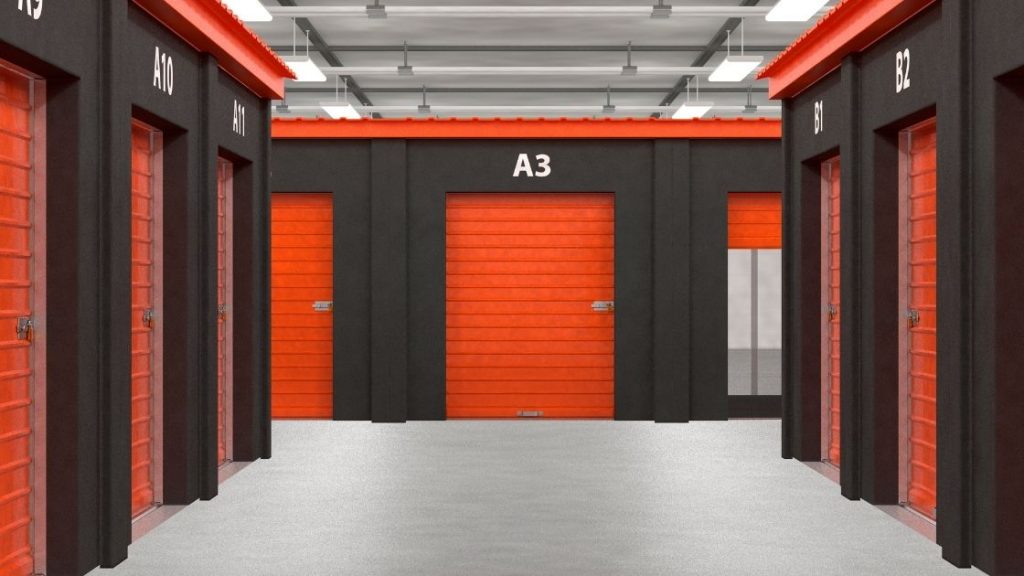Want to own a profitable and passive real estate business where you don’t have to deal with tenant complaints, broken toilets, and the usual hassles that come with managing rental properties?
The unmanned self-storage unit facility may be the perfect passive income solution for you. With this type of self-storage operation, you can enjoy a combination of high returns and low maintenance, all wrapped in the security of a business that has a success rate of 92%!
Sounds intriguing, no?
In this article, we will cover the seven steps to setting up a passive income self-storage unit business.
Step 2: Create a Business Plan
Step 4: Find a Location and Build Your Facility
Step 5: Choose Between Franchising and Independence
Step 6: Develop and Implement Marketing Plan
Step 7: Obtain Insurance, Permits, and Licenses
Before we dive into this, we will answer some key introductory questions you may have about the self-storage business, like how profitable they are and how much they can cost to start.
If you want to skip the introductory stuff and go straight to the seven steps, click here.
The information contained in this post is for informational purposes only. It is not a recommendation to buy or invest, and it is not financial, investment, legal, or tax advice. You should seek the advice of a qualified professional before making any investment or other decisions relating to the topics covered by this article.
How Profitable Are Self-Storage Unit Businesses?
On average a self-storage facility can make a 60-70% profit at full occupancy. The industry average occupancy is 90% according to Statista, but it may take some time for you to reach full occupancy (between 1-2 years). Source
If you want something more concrete, below is a youtube video by an actual owner of a unmanned self-storage business who talks through his numbers. The bottom line: His cash-on-cash returns were 39%! That an astounding return for a passive income business.
How Much Does It Cost to Open a Self-Storage Business?
Opening a self-storage business can be expensive. According to MakoSteel, if you are constructing the facility from the ground up, a single-story storage facility (not including land) will cost between $25 to $40 per square foot.
Multi-story buildings have a higher cost per square foot ($42-$70).
If you want to build a state-of-the-art facility, you are looking at between 60,000-80,000 rentable square feet, with a cost of $45-$65 per square foot (again excluding the cost of land).
That’s works out to around $2.7 million to $5.2 million.
But even with this high cost, you should reach a break-even point at around 40%-60% occupancy. A properly designed facility in a good location can operate at between 83% to 93% occupancy, so if you can achieve this, you should have a nice profit margin on your business.
Source: MakoSteel
Some common costs of building a self-storage facility include:
- Land cost (Rule of thumb is 25% to 30% of total development costs)
- Construction cost
- Office equipment
- Security systems and equipment
|
Security Feature |
Cost |
|
System (keypads, stands, intercoms, etc.) |
$7,700 to $30,000 per system |
|
Video Surveillance and Monitors |
$300 to $400 per camera |
|
Individual Electronic Locks and Door Alarms |
$50 to $250 per door |
|
Gate Operator and Gate |
$8,500 to $35,000 |
|
Apps, Security Software and Tech Support |
$95 to $150 per month |
Information in chart provided by Storage Pug.
Ok, now that we’ve covered some of the basic information about self-storage facilities, let’s dive into the seven steps that will get you started in this business.
Starting a Self-Storage Business

Step 1: Set Up Your Business
The first step is establishing your self-storage business. This includes selecting your name and logo, setting up your website, and establishing your business entity.
Get Your Name and Logo
Select a name and logo that you like and create a website.
Having trouble figuring out a name? Try Shopify’s business name generator. It’s free.
As for a logo, I have zero artistic ability and limited tech skills, so I like a simple and easy to use option.
Looka will provide you a professional looking logo at reasonable prices. You can choose from hundreds of logo designs (based on parameters and preferences you select) before settling on one you like. You can also customize to your heart’s content. Check them out here.
Note: You want to make sure your name and logo are original to you and are not going to infringe someone else’s intellectual property. If you are unsure, you can check the USPTO’s trademark search tool as a starting point.
Set Up Your Website
As for your business website, everyone is online these days, so having an online presence is a must. The site does not have to be incredibly fancy or cost a lot of money to set up. There are a lot of resources available to help you with this.
In fact, Google allows you to build your first business website for free.
Establish Your Business Entity
If your business is going to be a corporation, LLC, or some other business entity, you should establish that as well. You can hire a lawyer to help you or you can use many of the online resources that can help you set up your business entity.
I like Northwest because they can get you up and running quickly and easily. They are also one of the most affordable options that I was able to find that still offered great customer service ($39 as of the date of this article).
According to their website, they are the only national registered agent service that lets you use their office address so you don’t have to use your own. That’s a killer privacy advantage.
Definitely worth checking out.

You should consult with your accountant and lawyer before taking this step, so you understand the tax and legal consequences of setting up this type of organization for your business.
Step 2: Create a Business Plan
A business plan is essentially a roadmap for your business. It is important because it organizes your thoughts relating to your business into an actionable plan. Some things to include are a marketing plan, competition analysis, market analysis, pricing strategy, and revenue and cost projections.
You should also conduct a feasibility study as part of your market analysis. This will include assessing the competition, evaluating occupancy potential based on the size of the market, conducting a demographic analysis, etc.
This is an important step. You don’t want to invest the time, energy and money into building this business unless you have a high level of confidence that it will be successful.
If you are uncomfortable doing this analysis on your own, you should hire an industry expert to assist.
Another benefit of having a business plan is that it can help you raise money from banks and investors. These folks will want to see a professional-looking business plan as part of their lending or investing process.
Don’t know how to get started writing your business plan? The Small Business Administration has a great tool to help you.
Step 3: Obtain Financing
Fortunately, financing is available to start a self-storage business. Some popular financing options include SBA loans and regular bank loans.
Although qualification requirements for these loans will vary, you will typically need a solid credit score (650 or greater) and around 15% – 30% down.
According to Integrity Capital, SBA loans may be a great choice for building a self-storage facility because you can finance all of the construction interest and up to 2 years of loan payments. A further advantage of SBA loans is that they may only require 10% down.
Seems like a solid choice if you can qualify.
If you prefer to operate online, you may want to check out Fundera. They are affiliated with Nerdwallet and offer small business financing options from a variety of potential lenders. You fill out one application and they provide you with a list of lenders suited for your situation.
Step 4: Find a Location and Build Your Facility
Find a Great Location
Finding a great location for your self-storage facility is critical.
In most cases, you want to evaluate the 3-5 mile area radius around your target location to see if the area would support your self-storage facility and make it profitable. According to Sparefoot, that’s the typical size of a market for a self-storage facility.
You also want to evaluate the demographics. This includes both population and density. You may want to target people with disposable income such as folks in the middle income and upper-middle-income brackets. You may also want to look at target ages ranging between the early 20s and mid-50s. Source
Characteristics of a good self-storage location:
- Highly trafficked area, with great visibility from the road
- Large enough to build and operate the facility
- Properly zoned for self-storage business
- Strong population growth projections
- Acceptable level of competition in the target area
- Low crime area
Many, but not all, of these factors should be covered in your market analysis. Again, you want to make sure you get the location right if you want a shot at succeeding in this business. So take the time (and money, if necessary) to do a thorough analysis of everything that you need to evaluate to find a great location for your facility.
One option to look at is building out a facility near a military base. According to Rhinobldg.com, members of the military make up 10% of storage clientele. And EZ Storage states that the members of the military occupy 95% of the self-storage units that are near military bases.
If you happen to live near one, this could be an interesting option to explore.

Build Your Self-Storage Unit Facility (And Make It Passive)
When designing your self-storage facility, you want to make sure that you have a good mix of units sizes. The ideal mix will depend on your market and demographic analysis.
If your competition is constantly running out of certain unit sizes, you may want to exploit that gap. If your area is heavily homeowners, you may want to lean toward larger units because homeowners tend to have more stuff. The opposite, of course, is true for renters.
You will also want to consider whether higher-end features like climate controlled units are in demand and worthwhile. Again, it might make sense to hire an industry expert to help here. Once you build the facility you can’t take back your decisions, so you don’t want to make a mistake in this phase.
Now the part you have been waiting for:
How do you design and operate your self-storage unit facility to generate passive income?
Automated Kiosks:
One way is by installing self-storage automation kiosks. This technology allows you to operate your self-storage unit business without having someone on-site to take in customers and do many of the tasks that an onsite manager would handle in a traditional self-storage business. Not only does this allow you to operate your business with less hassle, you save money by eliminating the costs of having an on-site manager.
Here’s how it works:
Your customer can go to the kiosk and reserve their storage units. They can also pay their bills and insurance through the kiosk. You can then grant them access to their storage unit with electronic locking doors.
Online Booking:
Alternatively, you can eliminate the kiosk and just transfer the entire process online. Your customers can use their phones or computers as the kiosk.
They book their storage unit online, get a code to unlock the gate to the facility, are given directions to their storage unit, and are provided a free lock to secure their space. This means that you can have people rent storage units 24 hours a day without anyone being at the site.
This is the exact strategy used by the guy in the video that I linked to earlier.
Crime Is An Issue
One issue you need to address is illegal activity like vandalism, theft, etc. when your facility is unmanned.
The best way to mitigate this risk is to select a low crime location. You can also install a robust security system and make sure that the place is well-lit at night. Having a gate around the premises and using electronic access technology to secure all units also help secure the property against criminal acts.
Step 5: Choose Between Franchising and Independence
A critical choice that you have to make when starting a self-storage business is whether you want to start an independently owned self-storage business or go with a franchise model.
The overwhelming majority go with the former. Independent managers own 75% of all self-storage businesses.
There reasons are obvious. You have complete control over how your run your business and you get to keep all of your profits.
But you will need to come up with your own business plan and operational processes, and will be fully responsible for marketing, etc.
If you want a little bit more structure and guidance on how to operate your self-storage business, you can become a self storage franchisee.
You will have less flexibility on how you run the business and will have to pay franchise fees, but you will gain the benefit of the franchise company’s brand and its marketing efforts, as well as its proven business model.
They can also offer guidance on site selection (a key factor in your success), and building out your facility. Some lenders may also be more willing to finance your business if you go with a proven franchise.
Which franchises are available? Storage Authority seems to be a leader in this space. According to their website, you will need between $600,000 to $750,000 in cash to get started. If you want to learn more about this option, check them out here.
Step 6: Develop and Implement Marketing Plan
You need to have a solid marketing plan in place once you open your doors. As I mentioned earlier, many customers look online for basically everything, so you want an online presence.
You should already have a website. But you also want to list your business on Google My Business, so that people searching for self-storage facilities in your area can find you. You want to encourage people to leave good reviews there for you if they had a good experience with your business. Research has found a strong relationship between the number of online reviews a business and the revenue that it generates.
If you want to learn more about how to do this, check out this tutorial from Google.
You may also want to hire someone to help your business show up well in the Google search rankings. Bear in mind that 87% of self-storage customers are over 35 years old. So if you are going to use online marketing channels make sure they target people in that range.
Of course, you can also list your business on well-known online websites as well, such as Yelp.
If you want to go old school, you can advertise in your newspapers, neighborhood circulars, or through direct mail, flyers, etc.
Try experimenting with various marketing strategies – you may be surprised at what works best.
Step 7: Obtain Insurance, Permits, and Licenses

As with any business, you will need appropriate insurance to cover your major risks. Below is a table of insurance coverages you may want to consider for your self-storage business.
|
Type of Insurance |
General Description of Coverage |
|
Commercial Property Insurance |
Coverage for repair or replacement costs in event of damage to facility, such as fire, etc. |
|
General Liability Insurance |
Coverage for claims of bodily injury or property damage occurring on the premises |
|
Sale and Disposal Legal Liability Insurance |
Specialized coverage for conversion claims (i.e., claims that owner wrongfully sold or disposed customer’s personal property) |
|
Customer Goods Legal Liability Insurance |
Specialized coverage for damage to customer’s goods when landlord is at fault for damage (i.e., if roof is not repaired and water damage occurs to customer’s property) |
|
Flood Insurance |
Covers damage from flooding |
|
Worker’s Compensation Insurance |
Cover claims If employees suffer work-related injuries |
Contracts, Permits, Licenses, Etc.
In addition to covering your risks through insurance, you need to make sure you are squared away legally.
Ask your lawyer to draft rental agreements that you can use for your customers (and ensure they have the right disclaimers to protect you).
Also, make sure you get all of the permits, licensing, and other legal requirements needed to open and operate your self-storage facility squared away.
Some of this stuff you need to get done early in the process and some later, but before you open the doors, you need to make sure that everything is in place.
Buying a Self-Storage Business
If you want a ready-made business that is already profitable, you can buy an existing self-storage business.
There are some great benefits to this approach, including eliminating the uncertainty around whether a location will be profitable. That’s huge.
That being said, buying a self-storage facility comes with drawbacks too. Specifically, the facility and equipment may be outdated or be in poor condition. This can be a big cost, so you need to really examine the age and condition of the facility.
You also need to be aware of any developments that may be happening in that area. Find out why the owner is selling. You may not get a straight answer, but you should probe as much as you can.
Is there a new competitor that is building a new self-storage facility nearby? Is there some other local development that can cause the business to lose sales?
You should investigate these types of issues before buying.
In short, you should conduct thorough due diligence across all key dimensions (business, financial, legal, tax, environmental, etc.) before buying a self-storage business.
If you are interested in finding self-storage businesses for sale, check out the following sites:
Pros of Owning a Self-Storage Business
Self-Storage Businesses Can Be Profitable
We discussed at the top of the article how profitable self-storage businesses can be. A 60% profit margin is massive. No more needs to be said on that point.
Low Failure Rate
92% of self-storage startups succeed. That’s stunning given the high failure rate for most start-ups. It has to be one of the highest success rates I have seen. When listing out the benefits of investing in this type of business, you can’t ignore such a phenomenal success rate.
Self-Storage Businesses Can Generate Passive Income
We already showed how self-storage facilities can generate passive income, so I won’t cover that again. The ability to provide meaningful passive income is, in my opinion, one of the best features of this business.
Low Upkeep
Compared to regular real estate investments, you don’t have tenants actually living in your property.
This means less wear and tear and less maintenance overall. No toilets to fix, no appliances to repair, and generally less cost and hassle on this front.

Financing is Available
We already covered this point above. There are some pretty attractive financing options available for this type of business, which means your ROI can be tremendous. Moreover, because self-storage businesses enjoy such high success rates, lenders may be more willing to finance this type of business.
If you couple the leverage you get from financing and the possible passive income you can generate through this type of business, you have the potential to make huge returns without a lot of hassle. I love this combination.
For more ideas on how to use debt to generate passive income, check out my article on the topic here.
Business Has Growth Potential
One of the great benefits of owning a self-storage business is that it can be easily scaled. You can add more units to your facility as demand increases (assuming you have planned for this and have the space in your lot).
If you don’t, you can expand by opening up a second location once you have learned the business and can operate it profitably.
Alternatively, you can add additional services like U-Haul services. These types of services can be a great fit with your existing business and can be a terrific way to grow revenue.
If you want to learn more about becoming a U-Haul dealer, check out their dealer page here.
Demand For Self-Storage Is Strong
The demand for self-storage has been growing over the years. For example, between 2015 and 2019, available rental self-storage space went from 1.8 million square feet to 1.7 billion square feet. And revenue growth went lock-step with this explosion of available rental space.
From 2010 through 2019, average annual revenue for self-storage grow by 5% and projections show annual revenue to grow almost an additional 12% by 2024.
These stats tell a compelling story – you’re investing in a business that is on a great trajectory.
Cons of Owning a Self-Storage Business
Self-Storage Facilities Are Expensive
As discussed earlier, the cost of building out a self-storage facility can be high. And even with financing, your initial costs will be significant.
Competition Is High
As with any profitable business, the self-storage business can be very competitive. You can be facing competition from very large players in the industry, who have massive resources at their disposal. They can spend a lot of money on marketing, upgrading their facilities, and snatching up the best locations.
It’s just a part of the business.
You can try to avoid some of the competition risk, by finding underserved locations that still generate decent profits. It’s won’t be easy to find, but the effort may be worth it.
Crime
We have talked about this a bit before, but the risk of crime is something you need to be aware of and address. Having strong security is a must if you want to build and maintain trust with your customers.
The stronger your security, the less that people will worry about their stuff being stolen. This translates to more customers and more revenue for you.
Conclusion
So there you have it. Seven steps to starting a passive income self-storage business. The steps are straightforward and simple, but the execution is not. There is going to be a lot of time, planning and perseverance if you want to launch a successful self-storage business.
Be mindful of the risks of this business before you dive into it. A passively run self-storage business can change your life, but you have to be prepared to navigate the risks and pitfalls of this business to run it successfully.
Related Reading
If you want more great passive income ideas, check out my ultimate beginner’s guide to passive income [25+ strategies that work], where I cover tons of effective strategies that generate passive income.
One of my favorite articles on passive income is my piece on businesses that run themselves. In that article, I cover some great businesses that can generate attractive levels of return without a lot of day to day involvement by the owner (obviously, self-storage facilities are included in the list, but there are many more). Check it out here.

